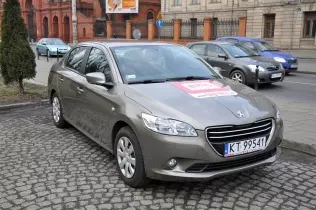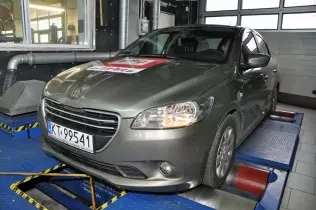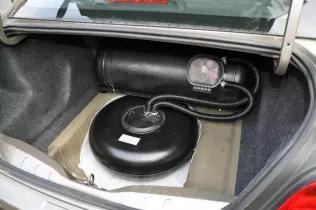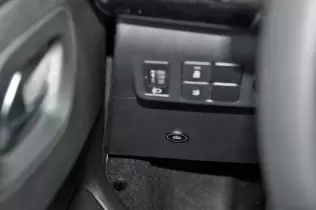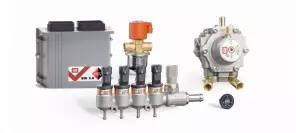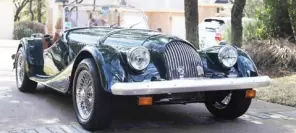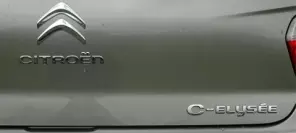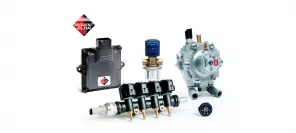- Main page
- Search
- Up to date
- Products
- Technology
- Vehicles
- Video
- Conversion Payback Simulator
Port Injection - Conversion Payback Simulator
Direct Injection - Conversion Payback Simulator
Diesel - Newsletter
Peugeot 301 LPG - when the going gets tough...
- Home page
- Up to date
- Reportages, interviews, road tests
- Road tests
- Peugeot 301 LPG - when the going gets tough...
« Powrót
 loading results...
loading results...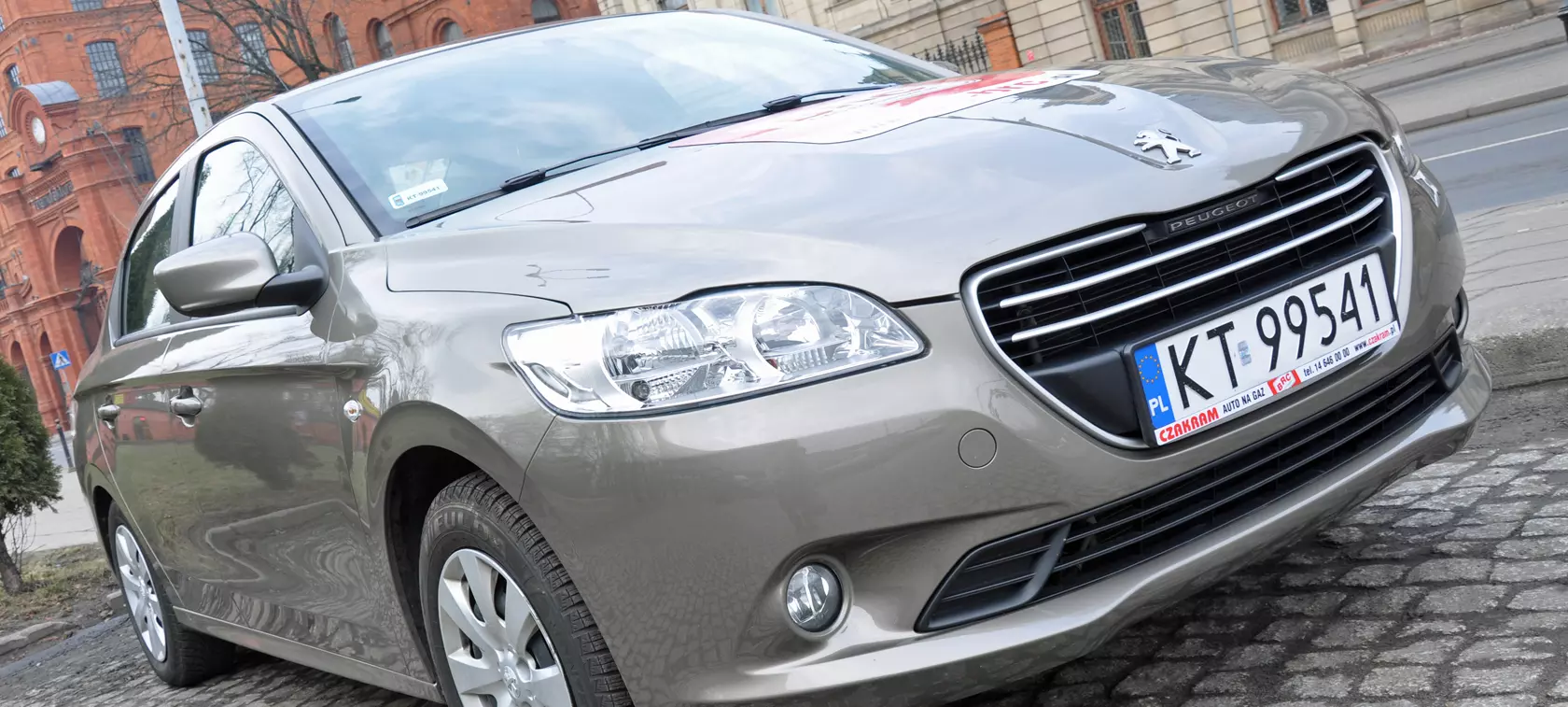 © gazeo.com
© gazeo.com 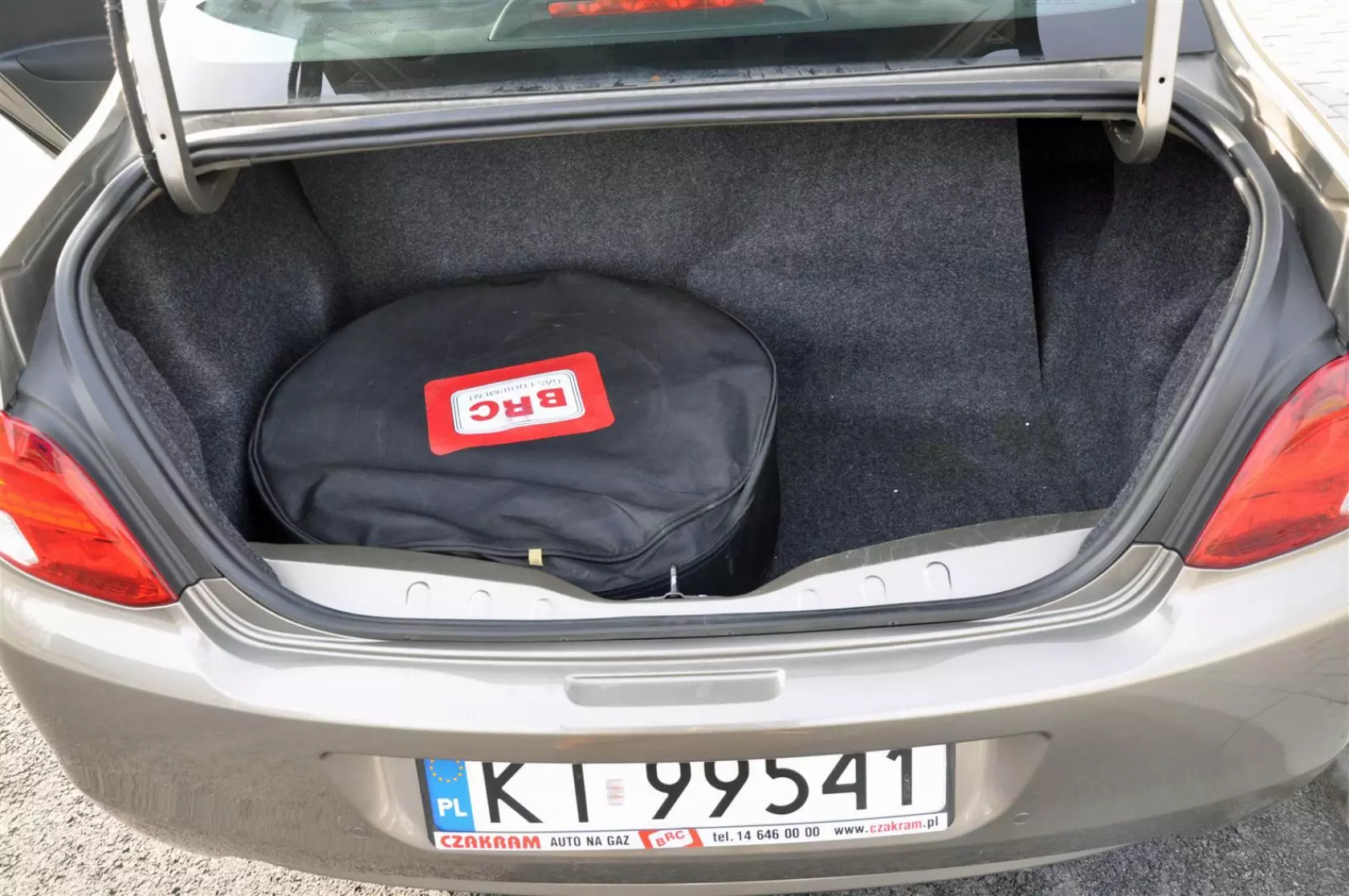 Even with two tanks and the spare wheel inside the boot offers decent amount of space
Even with two tanks and the spare wheel inside the boot offers decent amount of space 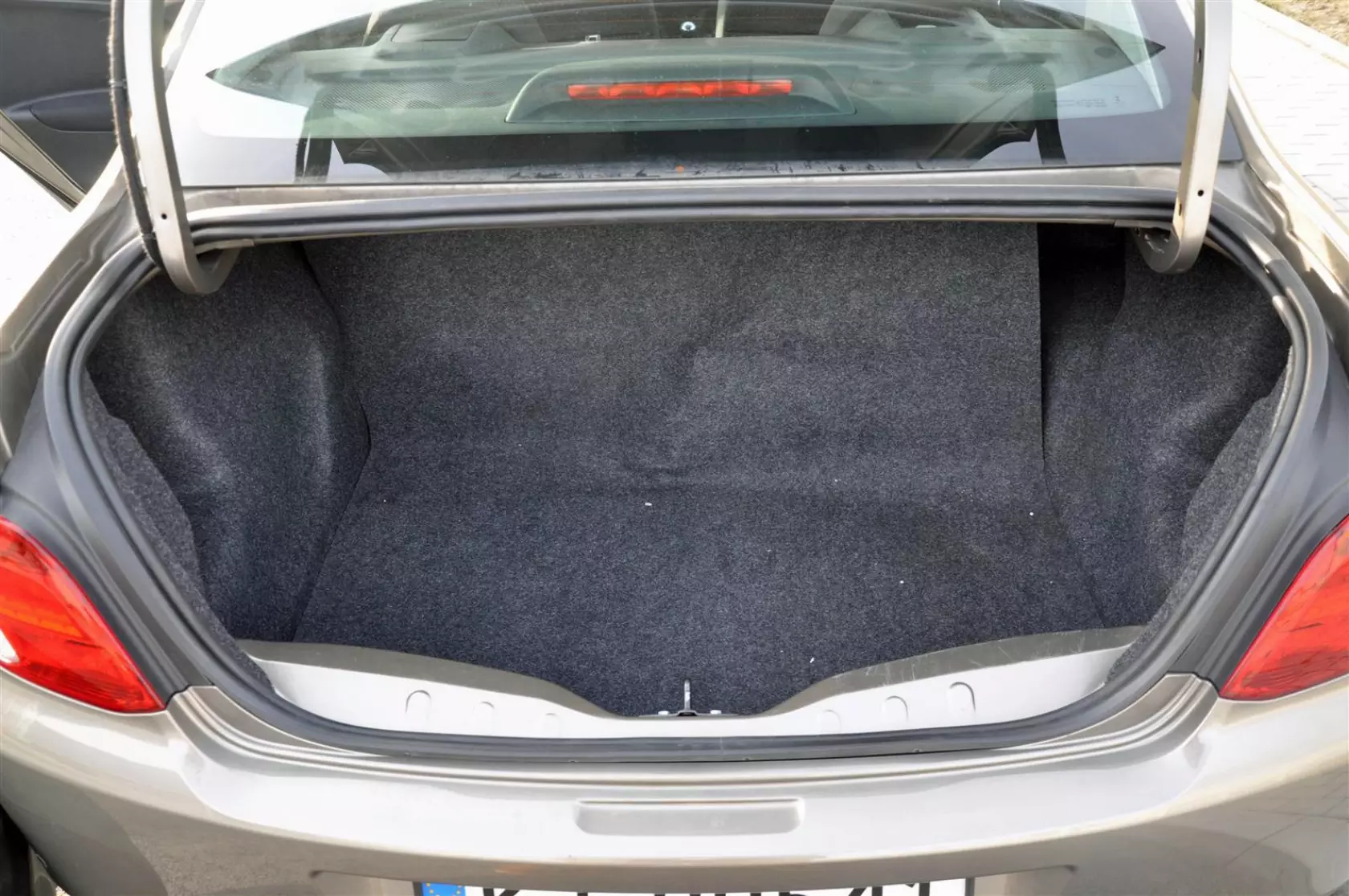 Removing the wheel brings considerable improvement, though. Beware of the penetrating hinges of the lid
Removing the wheel brings considerable improvement, though. Beware of the penetrating hinges of the lid 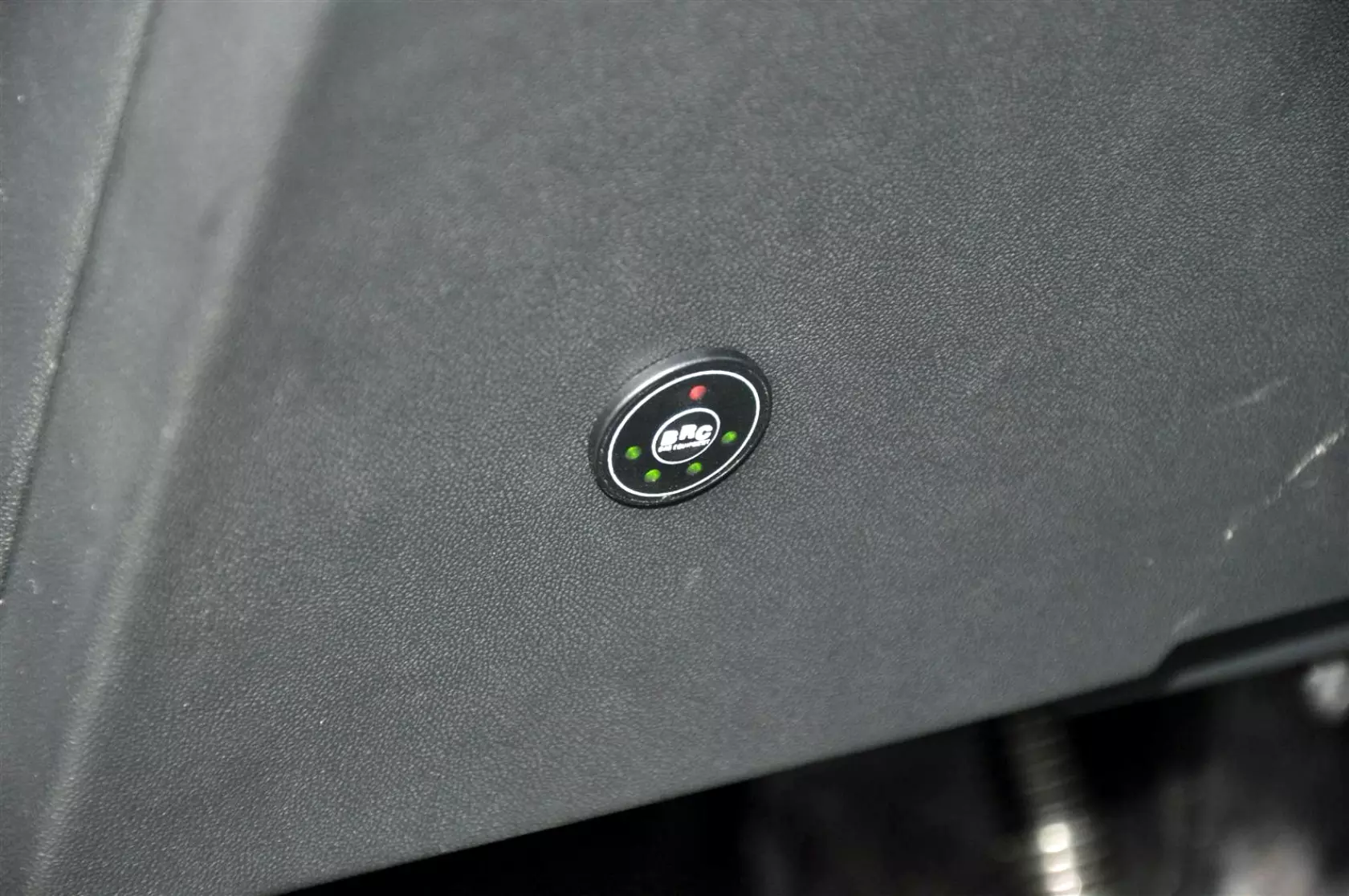 The switch sends various messages. When the autogas system is on standby, the upper LED is red and the fuel level LEDs are illuminated
The switch sends various messages. When the autogas system is on standby, the upper LED is red and the fuel level LEDs are illuminated 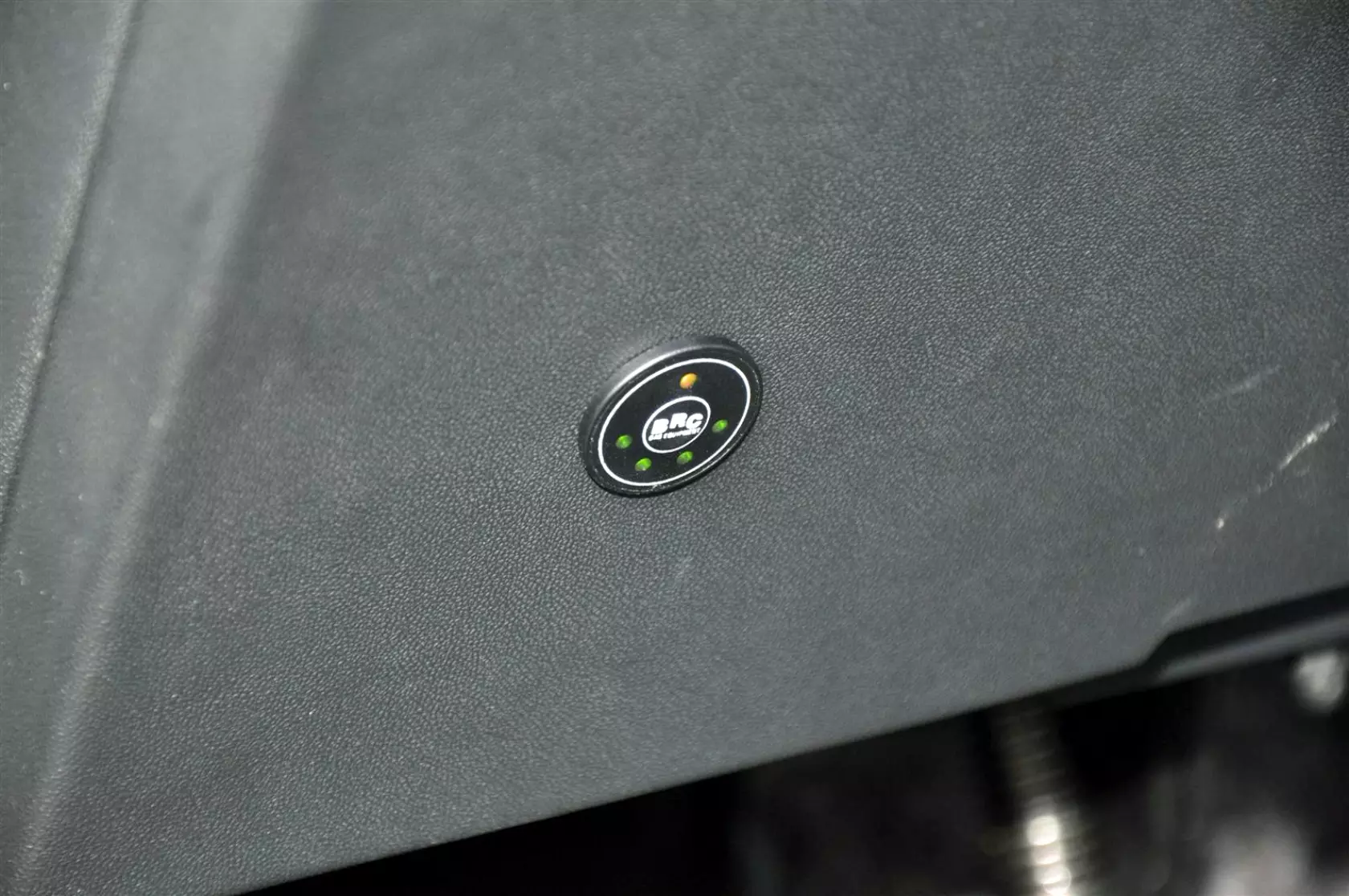 In the switchover phase, red gives way to yellow
In the switchover phase, red gives way to yellow  And when the system is on, the LED switches permanently to green
And when the system is on, the LED switches permanently to green  This is what the LPG nozzle looks like when you're not using it
This is what the LPG nozzle looks like when you're not using it  Put the valve upside down and you're good to go. In our opinion this is way better than extended valves
Put the valve upside down and you're good to go. In our opinion this is way better than extended valves  The vapour state LPG filter has nothing to hide...
The vapour state LPG filter has nothing to hide...  ... unlike the liquid state filter and the electrovalve - you won't reach them without getting under the car
... unlike the liquid state filter and the electrovalve - you won't reach them without getting under the car  This is what the Alba injector rail would look like if it could be seen
This is what the Alba injector rail would look like if it could be seen 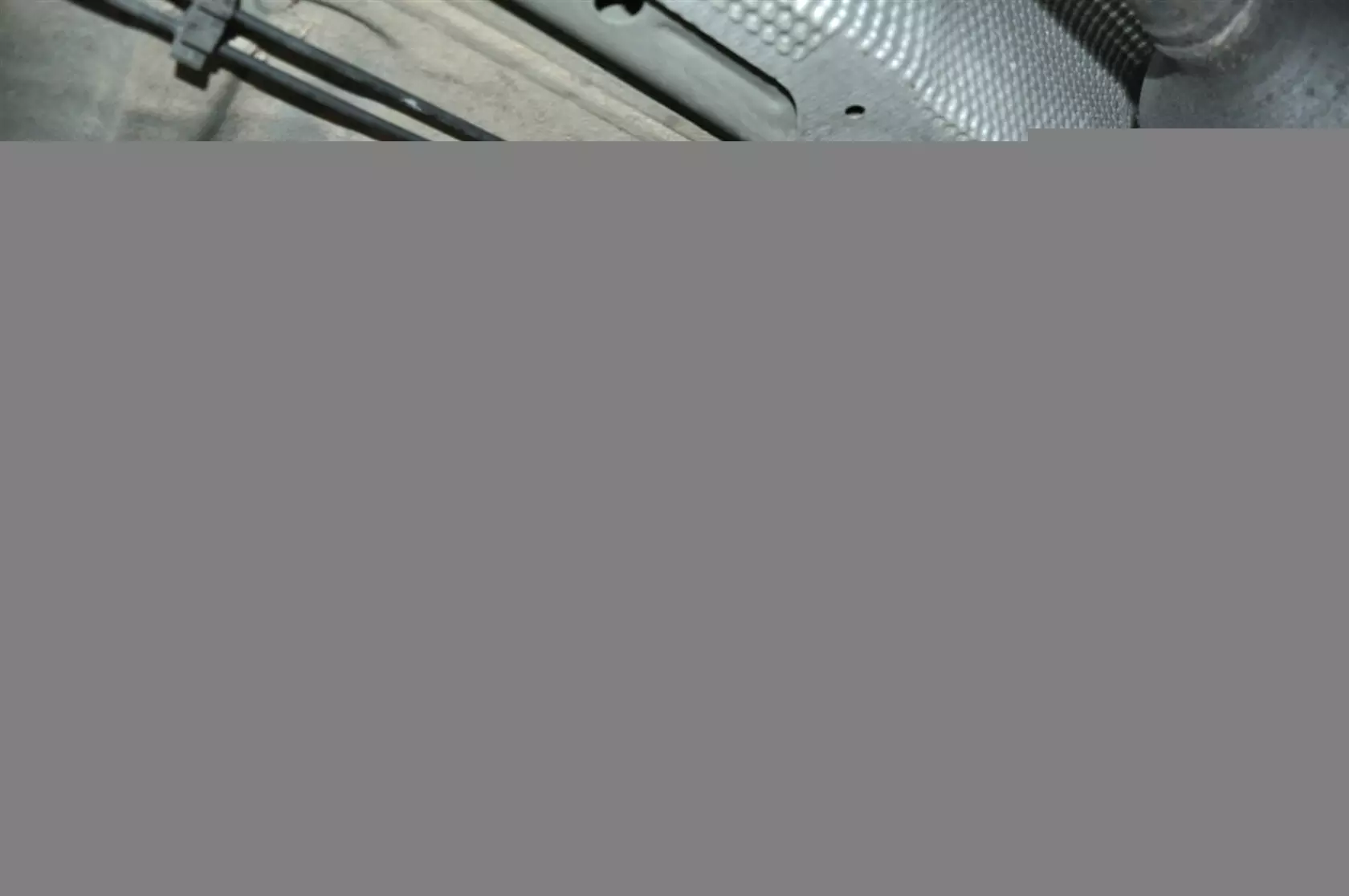 LPG line fastening points under the body have been protected against rust
LPG line fastening points under the body have been protected against rust 











As you may remember, some time ago we revieved the Citroën C-Elysée, equipped with a dedicated, officially-approved LPG conversion using a BRC Sequent 24.11 system. In fact, the very same system is also available for the Peugeot 301, available new from the French brand's showrooms. The one you see here isn't one such car, though. Yes, it does feature a BRC autogas system and yes, it too has been adapted for the car and fitted by Czakram, BRC's official Polish distributor, but the choice of vehicle is purely coincidental. The system under the bonnet is the new Sequent Alba, fitted here for testing before full-scale marketing of the product begins. And while Czakram is at it, we got a chance cast an opinion, too.
From a user's perspective, there's virtually no difference between the 301 converted with the Alba and the C-Elysée with a Sequent 24.11. And we know what we're saying, since both cars had identical engines between their front wheels (1,6-litre, 115-PS VTi units). Still, it seems like the Alba in the Peugeot was better fine-tuned – while testing the Citroën on a dyno we saw power drop from 117 PS on petrol to 108 PS on LPG, but the 301 offered the officially declared 115 PS irrespective of the fuel used. There's a but, though – maximum power is generated at 6000 RPM, which is a range where LPG injectors lack efficiency and the engine automatically switches back to petrol anyway. The silver lining is that nobody in their right mind would ever rev a "Pug" 301 up to 6000 RPM. Up to 4000 RPM, in the most useful engine speed range, power is virtually the same for petrol and LPG, so you'll notice no difference.
The test car inherits both the virtues and the flaws of its officially approved siblings featuring Sequent 24.11 systems. We like the Italian dish-type LPG nozzle permanently placed under the petrol filler flap (you just need to unscrew it and screw it back in upside down), but we're still (as we were with the C-Elysée) far from acclaiming the placing of the LPG/petrol switch. It's located low at the dashboard facing the driver's calves rather than eyes, which makes it inconvenient and unsafe to observe while driving. Luckily, in this particular car you don't need to constantly monitor the autogas level display in fear of running out of fuel...
And that's because Czakram decided to place... two LPG tanks in the car! After all, the Peugeot is for the company's internal use, so who could blame them? One of the tanks is a torus in place of the spare wheel (with a net capacity of 37,6 l), the other is a 52-litre (net capacity) cylinder. Their combined capacity is nearly 90 l and since the car is mainly used for long-distance driving, the duo of tanks needs no refills more often than once in 1000 km or even more! This is no joke – covering a lengthy route from Tarnów (Czakram's HQ) to Łódź (gazeo's HQ) we managed to average 8,56 l of autogas per 100 km (and as low as 7,1 l/100 km on the way back, with only the driver on board). This is in part due to the vehicle's low weight (approx. 1100 kg), but also thanks to the LPG system's precise calibration. And of course, you need to operate the accelerator pedal rather gently to get this sort of fuel economy figures.
However, if you hope to walk into a Peugeot dealership and see a 301 featuring a Sequent Alba system and two autogas tanks, you'll be bitterly disappointed (even if you live in a country where the model is offered in the first place). The new low-cost system from BRC is for the aftermarket, i. e. for individual conversions of used cars at private workshops (unless you want to bring a brand new 301 and have it converted at the risk of losing warranty – that's your call). Also, the car to be converted needs to have no more than 4 cylinders and to be moderately demanding when it comes to autogas ECU functionality. The Alba comprises a Genius MB or Genius Max reducer (in this case the MB with a diagnostic socket attached was used) and the newly developed, simpler and cheaper Alba injector rail, which helps keep the system's overall price down.
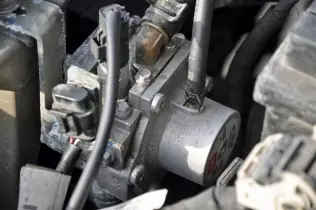 © gazeo.comUnlike some other components, the reducer is easily accessible and so is the diagnostic connector attached to it
© gazeo.comUnlike some other components, the reducer is easily accessible and so is the diagnostic connector attached to itAs far as conversion is concerned (which, mind you, isn't something to go by since no other car featuring the Sequent Alba system has to be a Peugeot 301 or converted by Czakram), the only visible and easily accessible components in the engine bay are the reducer and the vapour state LPG filter. The injector rail is hidden behind the intake manifold and we sincerely pity anyone who' is ever going to have to get to it. The same is true for the LPG electrovalve, located... near the left front wheel, with access only possible from underneath the car (same as with the C-Elysée). However, we're willing to turn a blind eye on those minor faults, since – let's say it again – this is just one exemplary conversion with a versatile system and any other instance of its application may be very different. Of course, you could have a Peugeot 301 or a Citroën C-Elysée converted with the Alba (or any other PSA model equipped with the 1,6 VTi engine, for that matter), but not a brand new one straight from the showroom (at least not with the car manufacturer's blessing). And if you're going to have a PSA car converted to run on LPG, mind a very specific feature of theirs...
Namely, Peugeots and Citroëns have the nasty habit of not allowing autogas systems to fool them when it comes to petrol use. Most converted cars display actual level of petrol left in their tanks, but that's something PSA's products just cannot do. Picture this: you're in the middle of a lengthy journey and suddenly you discover the level of petrol keeps dropping. First you're amazed, then you turn angry, but true bewilderment comes when you stop and restart the engine – for a brief moment the trip computer tells you petrol is out completely and you need to refuel immediately. Could this be? Is this because of petrol interjections for the sake of protecting valves and valve seats? No, not at all – the car just believes it's still in petrol mode. The fuel level indicator soon regains its common sense and displays actual level of petrol (unless, in fact, you have none left) – the same as when you left home. All is fine and you let out a sigh of relief, realising you'll just have to learn to live with this curiosity. Alternatively, you can choose a different car instead.
Much as we enjoy being fussy and pointing out minor flaws here and there, we have very little to bitch about in this particular case. As we said, the injector rail and the electrovalve are difficult to access and the LPG/petrol switch is hidden out of sight and reach, but – as we also said – this has nothing to do with any other conversion done with the Alba. Of course, many LPG/petrol switches may find their way into ashtrays or glove compartments anyway just because owners of cars to be converted will want to have them fitted that way (against common sense and current regulations), but that can't be helped. More importantly, the Alba works fine, with seamless switches between fuels, and gives BRC a powerful weapon to fight for customers in cost-conscious markets, like Poland, Bulgaria, Ukraine, etc. It sacrifices no quality – instead it does sacrifice certain functions most cars don't need anyway.
Now, there's the question of "cannibalising” one brand by another within the Fuel Systems Solutions group, which includes BRC, but also Zavoli, a budget brand in its own right. Since Zavoli already offers cost-optimised systems for cost-sensitive customers, what is the point of introducing a low-cost system under the BRC brand? The thing is many people will go for BRC in this case since the brand has better image and is associated with more sophisticated products, just the same way as some choose Volkswagen over Skoda even though the Czech brand offers some added value for the same kind of money. And besides, it's for the marketing guys over at BRC to play it right so that there is no internal competition between themselves and Zavoli.
Last but not least, how much cheaper is the Alba when compared to the Sequent 24.11? The difference is approx. 11,5 percent in favour of the new product, so if you happen to have a non-demanding car with a 3- or 4-cylinder engine, go with the Alba – in functional terms you'll spot no difference anyway. True, 11 percent may not sound like the deal of the century, but why spend more just for the thrill of it? The final call is yours, but consider yourself warned.
You may also find these interesting:
 loading results...
loading results...
